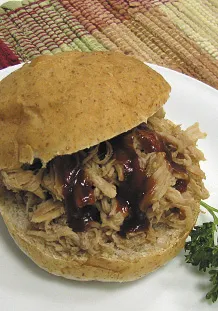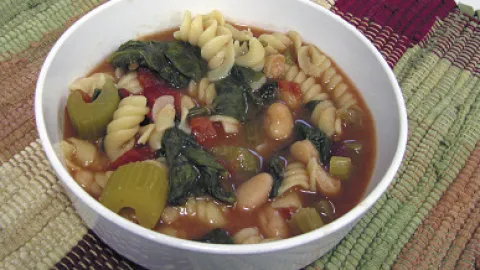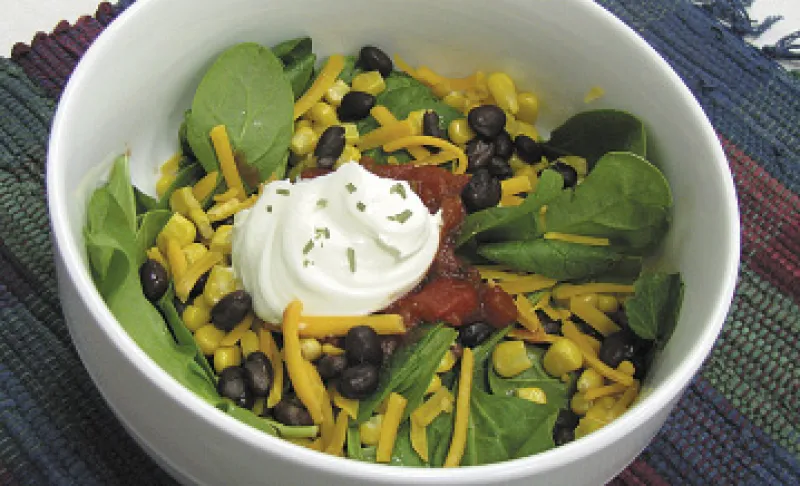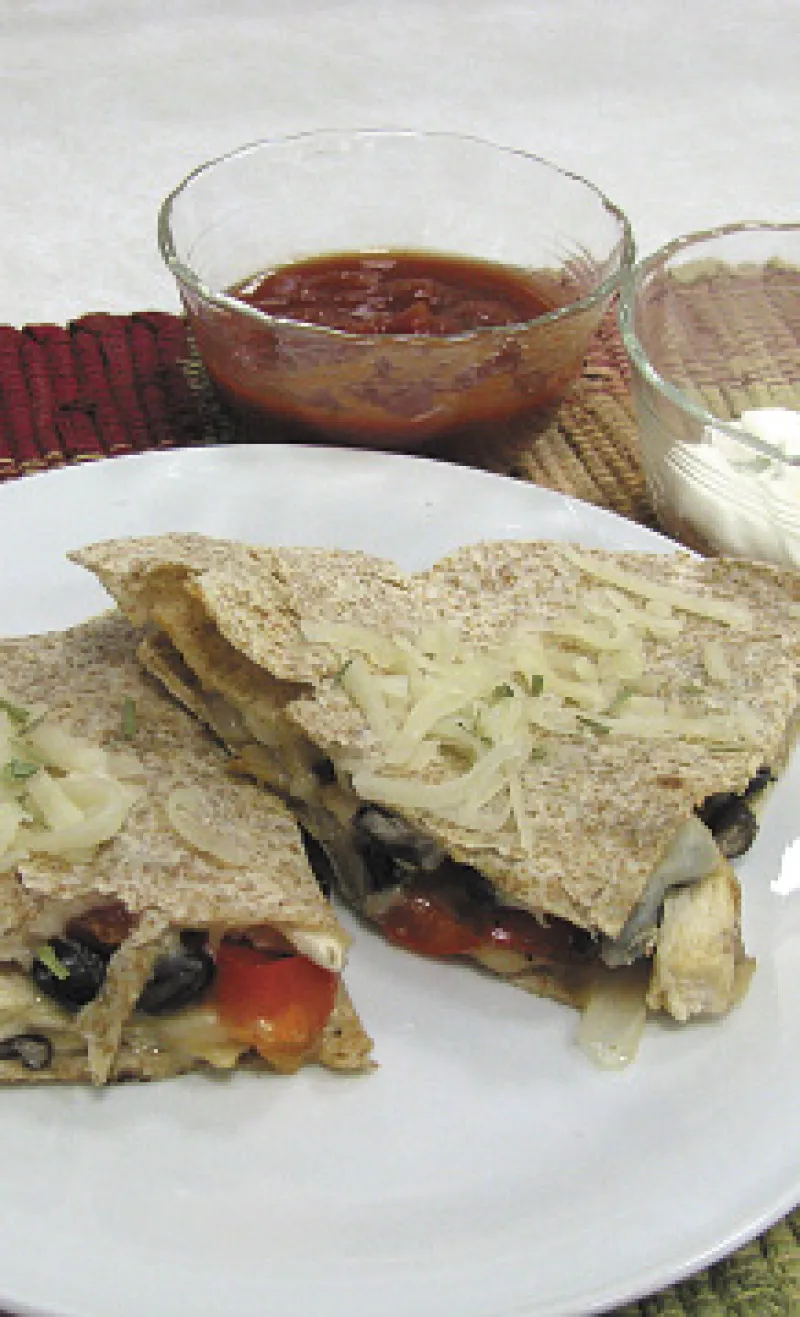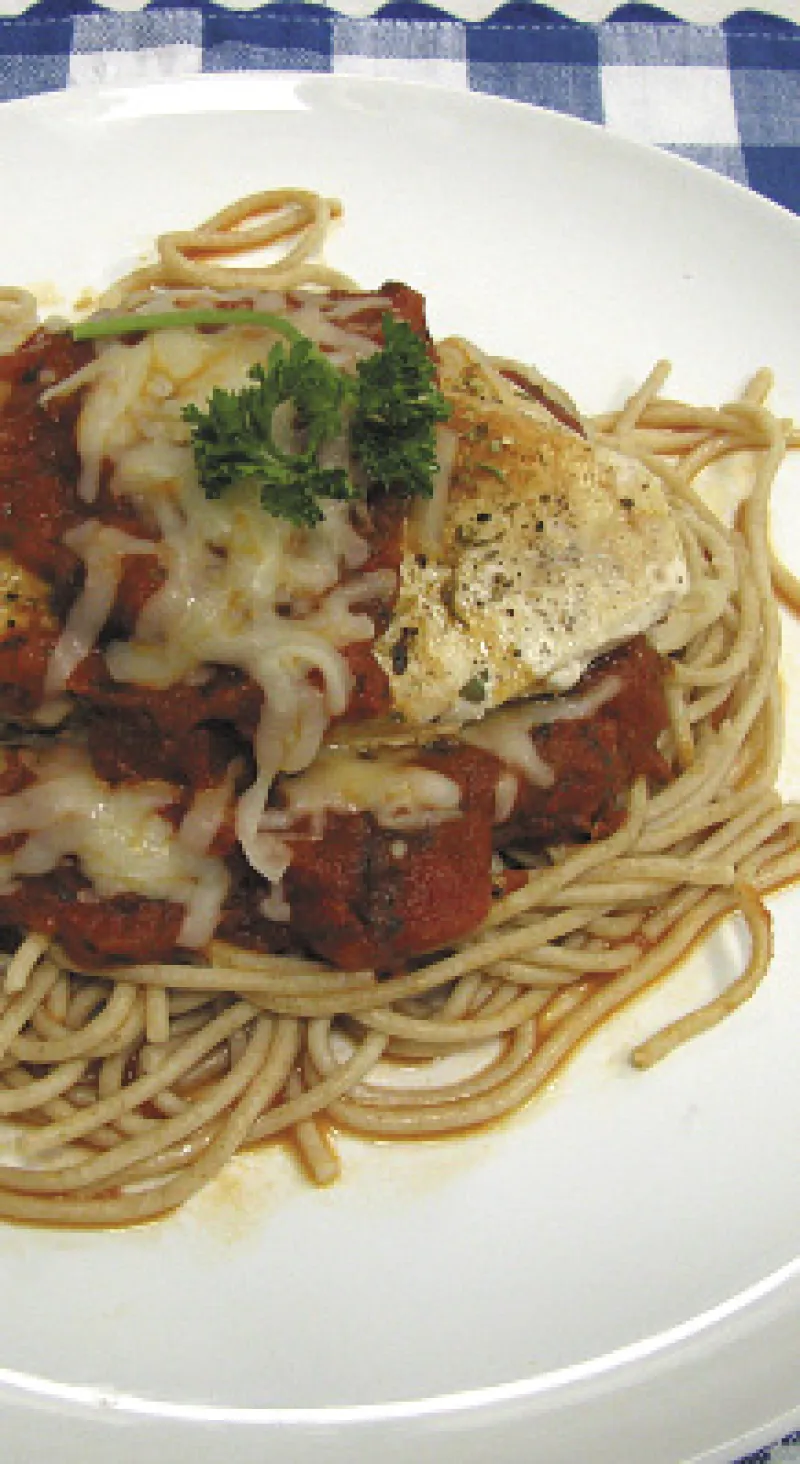Have you ever left a pound of meat on the counter to thaw?
Have you ever run a chicken breast under warm water to thaw?
If you answered “yes” to either question, you could be putting yourself at risk of foodborne illness.
Never thaw food at room temperature or in warm water. If food is warmer than 40 degrees Fahrenheit, but colder than 140 degrees Fahrenheit, bacteria will multiply quickly.
What if that warm water from the chicken breast splashed on a salad you had sitting on the counter? Now you have bacteria growing in your salad. If you think thawing food on the counter is OK because the center of the food is still frozen, be aware that the outer, thawed surfaces will serve as a breeding ground for bacteria.
For more information, visit these Web sites:
For more information, visit these websites: Food Freezing Guide (FN403)
Eat Smart: Cook Food Safely in a Microwave Oven (FN1622)
Food Storage Guide (FN579)
Weekly Menu Planner - Week 2
*indicates recipe is provided| | Breakfast | Lunch | Dinner | Snacks |
| Mon. | - Whole-wheat toastwith peanut butter
- Banana
- Skim milk
| - Vegetarian Taco Salad*
- Apple
- Skim milk
| - Minestrone Soup*
- Whole-wheat crackers
- Ham and cheese sandwich
- Skim milk
| - Celery sticks with dip of choice
- Popcorn
|
| Tues. | - Oatmeal with chopped apple
- Skim milk
| - Baked potato with shredded cheese, sour cream, salt and pepper
- Skim milk
| - Pulled pork sandwich*
- Leftover Minnestrone Soup*
- Skim milk
| |
| Wed. | - Oatmeal with almonds and dried cranberries
- Orange
- Skim milk
| - Chef salad with deli ham, cucumbers, grape tomatoes, salad dressing, shredded cheese
- Skim milk
| - Healthy Chicken Parmesan*
- Baked (or microwaved) potato
- Microwaved veggies
- Skim milk
| |
| Thurs. | - Whole-wheat toast with peanut butter
- Banana
- Skim milk
| - Leftover Minestrone Soup* with whole-wheat crackers
- Small spinach salad with cucumbers, grape tomatoes, salad dressing, shredded cheese
- Skim milk
| - Chicken and Black Bean Quesadilla*
- Microwaved veggies
- Skim milk
| - Popcorn
- Orange
- Celery sticks with dip of choice
|
| Fri. | - Scrambled Egg Burrito*
- Skim milk
| - Deli ham and cheese sandwich on whole-wheat break with cucumbers and spinach
- Skim milk
| - Easy Pasta Bowl*
- Orange
- Skim milk
| |
| Sat. | - Whole-wheat pancakes topped with fresh banana slices
- Orange
- Skim milk
| - Leftover Pulled Pork* in tortilla
- Microwaved veggies
- Skim milk
| - Grilled chicken salad with spinach, grilled chicken, cubumer slices, shredded cheese and salad dressing
- Skim milk
| - Popcorn
- Apple
- Celery sticks with dip of choice
|
| Sun | - Cereal of choice
- Apple slices with peanut butter
- Skim milk
| - Grilled ham and cheese sandiwch
- Microwaved veggies
- Skim milk
| - Chicken and Veggies Stir-fry*
- Skim milk
| |
| Hint: Cooking a few chicken breasts at the beginning of the week and refrigerating or freezing them will make cooking meals much faster. |
Grocery List
Read through the recipes and check your supplies to see what and how much you need.
Grains
❏ Whole-wheat bread
❏ Whole-wheat tortillas
❏ Oatmeal
❏ Whole-grain spiral pasta
❏ Reduced-calorie microwave popcorn
❏ Whole-grain pancake mix
❏ Whole-grain crackers
❏ Cereal of choice
❏ Box of granola bars (whole grain, preferably)
Vegetables
❏ 1 large bag prewashed spinach
❏ 1 bag celery
❏ 1 bag pre-chopped/washed stir-fry vegetables (Make sure it includes bell peppers)
❏ 1 large cucumber
❏ 1 to 2 packages frozen vegetables (such as corn, mixed vegetables)
❏ 1 small package grape tomatoes
❏ 2 Russet potatoes
Fruit
❏ 5 bananas
❏ 5 apples
❏ 5 oranges
❏ 1 bag dried cranberries
Dairy
❏ 1 gallon (or more) skim milk
❏ Shredded cheese (such as mozzarella)
❏ Parmesan cheese
❏ Low-fat sour cream
Meat/other protein foods
❏ Small pork tenderloin
❏ 1 bag frozen boneless, skinless chicken breasts
❏ ½-1 pound shaved deli ham
❏ 1 carton eggs
❏ Bag of unseasoned, pre-chopped almonds
Canned/dry goods, etc.
❏ 1 jar peanut butter
❏ Soy sauce (preferably reduced-sodium)
❏ Barbeque sauce of choice
❏ Salsa
❏ Low-fat salad dressing of choice
❏ Dip of choice for celery (optional)
❏ Olive oil
❏ 1 packet dry onion soup mix
❏ 2 cans low-sodium chicken broth
❏ 28-oz. can low-sodium diced tomatoes
❏ 15-oz. can white beans (cannellini or navy)
❏ 15-oz. or smaller can black beans
❏ 1 small jar tomato/spaghetti sauce of choice
To save money, compare unit prices (price per ounce) on the store shelving.
